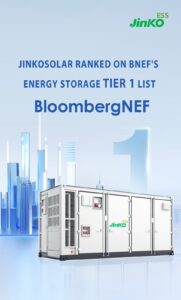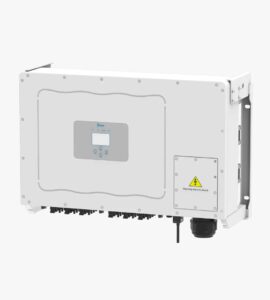This Smart Growth / Smart Energy Toolkit module’s main goal is to inform people about the steps that may be taken by communities, businesses, and individuals to advance smart energy. One crucial step that this toolkit supports is the production of electricity from renewable sources. Another is energy conservation through green building, reduced usage of cars, and energy efficiency. In addition to lowering greenhouse gas emissions and improving environmental quality, these and other measures will also enable consumers and communities to save a sizable amount of money.
This guide covers anaerobic digesters, gasifiers, landfill gas, solar, wind, and other renewable energy sources. There are many ways to use renewable energy presented. Similar details are included for greener fuels and solutions to reduce diesel emissions.
Benefits of Smart Energy
Smart energy is the more effective use of energy achieved by better design, high efficiency technology, conservation, and the use of clean renewable resources to provide power, heat, and transportation fuels. Energy efficiency is essential to achieving smart energy goals because it lowers long-term costs, reduces the need for new power plants, and increases the likelihood that renewable sources will be able to supply all of our energy demands in the future.
- Energy Efficiency: Buildings are a major user of energy. By building green the Commonwealth can save water, energy, building materials, while providing healthy indoor environments that increase worker satisfaction and productivity.
- Reducing Fossil Fuels and Pollution: Reducing fossil fuel use and the associated environmental impacts through enhanced technologies and use of alternate fuels in the transportation sector is another major component of smart energy. Implementation of smart energy practices decreases global warming emissions and other pollutants, enhances public health, advances environmental justice, and reduces spending on fossil fuels.
- Economics: Promoting smart energy has strong economic development benefits, particularly in a high-skill state such as Massachusetts. Much of the economic value of using fossil fuels leaves the state, while energy efficiency and renewable energy alternatives generate many more jobs in both research and development and implementation and servicing of smart energy technologies.
The Problem
Smart energy is the more effective use of energy achieved by better design, high efficiency technology, conservation, and the use of clean renewable resources to provide power, heat, and transportation fuels.
Our existing methods of energy use have a number of issues. We use more energy than is necessary, and a large portion of that energy originates from coal and oil, two very polluting fossil fuels. One of the main issues with the use of fossil fuels is the greenhouse gas emissions that are causing global warming and altering our climate. Air pollution, asthma, and other bad effects on public health are a few of the other significant negative effects of present conventional energy generation and consumption, along with the associated national security considerations that come with it. While lessening energy consumption and utilising renewable energy sources are alternatives, these smart energy techniques are just now being seriously pursued.
Recommended Policies and Actions
This module’s goal is to give communities and other interested parties ideas for how to promote smart energy as well as information on how to put those ideas into practice. Municipalities, for instance, can encourage owners of houses and companies to embrace smart energy best practices by using their regulatory and financial authority. Municipalities can also promote smart energy, efficiency, and conservation through the adoption of building and fleet efficiencies, local power generation, energy purchase practices, and other municipal policies and initiatives. Smart energy promotion is fostered in cities and municipalities through:
- Completion of greenhouse gas inventories, building assessments, and other “baseline” studies
- Adoption of master, climate action, and other plans that address smart energy and establish greenhouse gas emission, energy consumption, and other measurable targets
- Passage of zoning and other land use regulations that facilitate the siting of wind and other renewable energy facilities and that encourage or require green building and energy efficiency measures
- Construction of green and energy efficient homes, businesses, and civic buildings
- Reduction of fossil fuel consumption and air pollution from transportation through fuel-efficient fleet policies and increased use of transit, bicycling, and walking in addition to alternative fuels and technologies
Planning for Smart Energy
Planning for smart energy can be done at the regional level and as part of more conventional land use planning tasks, including finishing a master plan. It may also take the shape of a plan for addressing the environment or another aspect of energy. A community can set objectives for future performance by inventorying and quantifying its existing energy use and energy-related regulatory procedures. Smart energy strategies are much more likely to be successfully implemented in development projects if they are taken into account early in the planning and design process.
The formation of an energy committee or task force is typically the first step in energy planning; these organisations frequently play a key role in achieving smart energy objectives. These committees frequently include of both paid and unpaid municipal representatives, as well as interested individuals. They may be established by the community (for instance, by appointing them by the Board of Selectmen) or just by a simple informal coalition of interested parties.
Although there are many different ways to prepare for smart energy, all plans should engage a large portion of the community. Communities can do smart energy planning by joining the Cities for Climate Protection Campaign of the International Council for Local Environmental Initiatives (ICLEI). The Campaign supports the development and execution of laws and measurable actions that will lower regional greenhouse gas emissions, boost air quality, and promote the sustainability and livability of metropolitan areas.
A greenhouse gas emissions inventory determines of the amount of greenhouse gases presently being emitted in a community from various sources. ICLEI provides software and a methodology that communities can use to complete an inventory. Climate action plans outline measures that a community intends to take in order to achieve greenhouse gas reduction targets. Typical measures include reducing energy consumption through efficiencies and utilization of more renewable energy in place of fossil fuels.
Completion of a master plan is another ideal time to address smart energy goals. These plans should be the overall guide to municipal actions; one that is followed by all departments of municipal government in the implementation of policies, programs, regulations, and expenditures. Master plans typically begin with a vision statement identifying the goals and policies of the municipality for its future growth and development. The purpose of which is to specify community values and goals in order to identify patterns of development (among other things) that will be consistent with these goals. Smart energy – generation of energy from renewable sources and energy conservation measures – is an important value that can and should be expressed in a community’s vision statement.
In addition, the land use plan component of a master plan provides recommendations for conservation and development of land within the municipality. In the water resources module of this Toolkit communities are encouraged to plan in advance for the location and protection of future water supplies, and communities can do the same for potential sites for renewable energy production. For example, where it is relevant (largely coastal communities and those of higher elevation) as part of the land use planning component of a master plan communities should determine where good sites for wind power are located. Regulations can then encourage the construction of wind facilities in these locations. Hydro and to a lesser extent solar power can also be addressed in this manner.
In addition, because of the importance of growing more densely to attaining smart energy goals (as well as land protection, water quality, and other environmental objectives) the land use component of a master plan is a particularly significant opportunity to encourage compact mixed-use development. Finally, community planning efforts should consider measures to adapt to rising floodplain levels. This is particularly relevant to coastal communities given that 100 year floodplain levels are changing due to sea level rise and increasing storm intensity.
The housing, economic development, and in particular the transportation elements of a master plan also present important opportunities to promote smart energy. Green building and energy efficiency practices should be reflected in the housing and economic development sections. The transportation element of a master plan will address transit opportunities, the road network, as well as facilitation of bicycling and walking. The more this element emphasizes alternatives to automobile travel, the better the community and the Commonwealth will fare in the effort to meet smart energy goals.
A community can also make important strides toward smart energy use by focusing specifically on their capital facilities. Completion of a capital facilities plan as part of the services and facilities element of a master plan can address investments in buildings and systems to implement smart energy practices. If a plan calls for building or remodeling municipal facilities, such as school, library, or town hall, this is a great opportunity to implement green building and energy efficiency practices. In addition, these plans typically address large scale infrastructure – roads, bridges, seawalls, etc. – and can be an opportunity to explore provision of district energy for more compactly developed portions of the community.
No plan is complete without an action or implementation section that specifies how goals are to be met, who is responsible, and when actions are expected to occur. Typically, action items include modifications to local regulations (zoning, subdivision, etc.) to reflect plan goals. This presents communities another opportunity to insert smart energy measures into land use bylaws or ordinances as well as other municipal regulations.
Finally, in addition to government entities at all levels, a wide variety of non-profit, advocacy, and public interest organizations have formed around smart energy issues. These include the Mass Energy Consumers Alliance, MASSPIRG, and the Mass Climate Action Network and its member organizations. All provide opportunities for participation as well as information and assistance in planning for and implementing smart energy measures.
Conclusion
The conclusion is that the Smart Energy System concept represents a scientific shift in paradigms away from single-sector thinking to a coherent energy systems understanding on how to benefit from the integration of all sectors and infrastructures. There are clear and obvious implications for the energy sector when we do not account for questions about changing ways of life. Existing approaches to socio technical futures have taken significant steps towards exploring and documenting stakeholder future.






